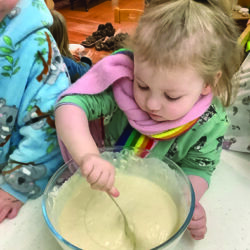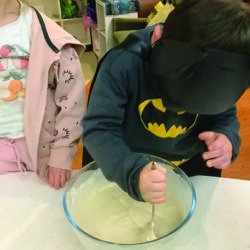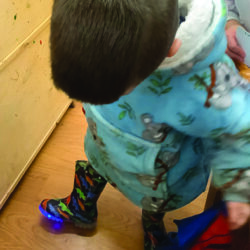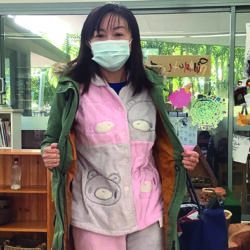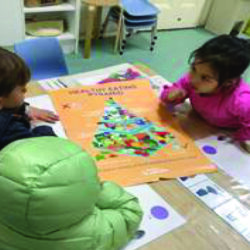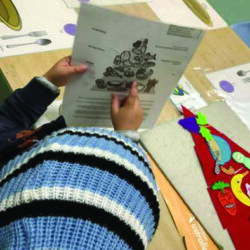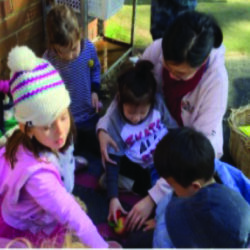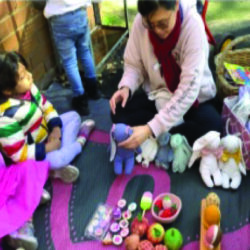Gorton House
Preschool
Story by Educator Nicky
A ‘pyjama day’ has been on the Gorton House preschoolers’ list as something they have really wanted to do for some time now, so we finally agreed on a date and last week was it!
Over three days the children were invited to come to preschool as snug as bugs in rugs (or onesies, flannels, slippers, nightrobes, oodies or whatever else they like to snuggly sleep in). Several of the children helped to create a poster to inform other children and families of the pyjama event—they discussed which pyjamas they planned on wearing and described these, and they even drew some of these for the poster which we then posted on the front door
Each morning we saw enthusiasm and joy as the children arrived, comparing their PJ’s, sometimes noticing they had the exact same pyjamas and showing delight when they found that some of the educators had also arrived in their pyjamas. We had slumber parties, complete with pillow fights—of course this was the children’s idea! We listened to spooky stories and later popped popcorn and read some bedtime stories. One day we made pancakes for breakfast, with some children making the pancakes as their peers arrived. A lovely time in all….
It was our last PJ day on Friday, at least until the next time children want to plan another one. Supporting the children to lead the program in the ways in which we strive to do acknowledges and shows respect for their agency. We see constant reminders of how a wide range of learning, across all curriculum areas, can be embedded in these child-led, every day and meaningful play experiences. We value being able to honour children’s childhoods, respect their needs and interests, and their right to play and experience learning through joy.
Johnson House
Preschool
Story by Educator Madhu
A group of children in Johnson House preschool have been exploring food, in particular healthy foods. The Healthy Eating Pyramid has been a great tool to aid in discussions about healthy foods with the children. They were able to distinguish which foods were seen as healthy foods and others that were foods that we should only eat sometimes. The children were also able to identify which foods they preferred and some they hadn’t tried before. They were given the opportunity to create their own version of the Healthy Eating Pyramid using the felt board, and they were able to successfully determine which foods belonged in each category.
Robinson House
Story by Educator Denise
Our pretend play experiences have continued to remain popular in Robinson House as we continue to build our social skills in turn taking, sharing resources and expressing our sense of respect, kindness and empathy towards others, as well as utilising expressive language skills and developing our learning dispositions in creativity and imagination. The repetitive nature of our pretend play experiences allows the children to revisit these and to interact in different social groups, allowing them opportunities to continue building their social skills and connections with others.
Before delving into the delights of our play picnic, I engaged a group of children to read the book ‘Crumbs’, by Phil Cummings and Shane Devries. It is a story about kindness, told through the perspective of a little girl named Ella who is waiting for her dad for lunch when she observes two individuals who are doing it tough: a one-legged sparrow and a beggar. We observed how the other people in the story were indifferent to these individuals’ needs. The story aroused the children’s sense of sympathy and empathy as they tried to understand the hardships the characters in the story were going through. The children were happy for these characters when they were finally treated with kindness by Ella and her father. It’s stories like this that capture our attention and challenge our sense of morality, and help us to build our understanding of the world around us.
The children had a choice of seven bunny friends to join their picnic, including two regular bunnies, Topaz and Blossom, three tiny bunnies, Sapphire, Sage, and Creamy, and sparkly bunnies, Crystal and Diamond. Alongside the variety of bunnies available, felt fruits and sweet treats were also made available for the children to feed them.
I reminded the children that we needed to express kindness and awareness of each other to ensure that everyone who wanted a turn to play with these special resources had one, and that we should treat others how we want to be treated.
The children took time to listen to each other’s requests and conversations and they took turns so that others could be heard. The bunnies were frequently exchanged and shared around. It could be quite a challenge for some of the children to not get the bunnies they wanted immediately, but they used these opportunities to develop their patience and to use their expressive language and communication skills. The children expressed a lot of nurturing, caring and empathic behaviours as they took care to feed their plushy bunny friends with the pretend food and gave them lots of cuddles.
Sharing and exchanging resources while communicating their ideas and requests to each other helped enrich the children’s social skills and their interactions with each other, and this was also beneficial in building their teamwork and cooperation skills.
